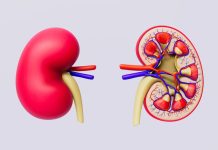
Do you know that doctors can use magnets to help people who feel very sad all the time? This sadness is a serious condition called depression, and sometimes, regular medicines don’t help.
But, a treatment named Transcranial Magnetic Stimulation (TMS) uses powerful magnets to stimulate the brain and help people feel better.
Until recently, scientists were not sure exactly how it worked. Let’s explore what some smart people at Stanford Medicine found out!
What is TMS?
TMS is like a magic trick for the brain. Doctors place a big magnet near the patient’s head, and this magnet sends strong pulses into the brain.
This treatment can quickly help people with severe depression. The fancy name for this treatment is Transcranial Magnetic Stimulation, but we’ll stick to calling it TMS.
How Does TMS Work?
We know that TMS helps a lot of people, but the exact way it worked was a mystery until recently.
It’s like knowing that a car can drive you from one place to another but not understanding how the engine works.
Anish Mitra, a really smart scientist, wanted to understand how TMS works. He had created a special mathematical tool while studying in Saint Louis that could be used with an imaging technique called fMRI.
fMRI allows scientists to see which parts of the brain are active. Using this tool, he found out that TMS changes the way messages travel in the brain. Think of it like redirecting traffic in your city to avoid a traffic jam!
The Big Experiment
To test this out, Mitra and his team decided to do an experiment. They gathered 33 patients who were struggling with depression, and regular treatments weren’t working for them.
Of these, 23 received the real TMS treatment, and 10 received a fake treatment (like a placebo) which felt like TMS but didn’t have the magnetic pulses.
They also studied 85 healthy people without depression for comparison. The team used fMRI to see how their brains worked during the treatment.
The Amazing Findings
The results were surprising! In a healthy brain, one part called the “anterior insula” sends signals to another part, the “anterior cingulate cortex”.
Imagine it like a mailman (anterior insula) delivering letters (signals) to a house (anterior cingulate cortex). But, in most of the depressed people, this process was reversed. The house was sending letters to the mailman!
What’s even more interesting is that the more depressed people felt, the more reversed the signal flow was.
Once these people received the TMS treatment, their brain signals returned to the normal direction within a week, and they started to feel better!
The Future of Depression Treatment
So, why is this so important? Well, right now, when someone is feeling very depressed, it’s hard for doctors to know what’s causing it.
They don’t have a clear test like when someone has a fever, and they can check for bacteria or viruses. But this study shows that the direction of the brain signals could be a sign of severe depression.
This discovery is exciting! In the future, doctors could look at the flow of signals in a person’s brain to decide if TMS might be a good treatment for them.
This study might help many people feel better and overcome their sadness faster.
Isn’t it amazing how our brains work and how scientists are figuring out ways to help us feel better?
Next time you’re feeling sad, just remember that our brains are incredibly powerful, and sometimes, they might need a bit of magnet magic to get back on track!
If you care about depression, please read studies that vegetarian diet may increase your depression risk, and Vitamin D could help reduce depression symptoms.
For more information about brain health, please see recent studies about antioxidants that could help reduce dementia risk, and Coconut oil could help improve cognitive function in Alzheimer’s.
The study was published in PNAS.
Copyright © 2023 Knowridge Science Report. All rights reserved.



